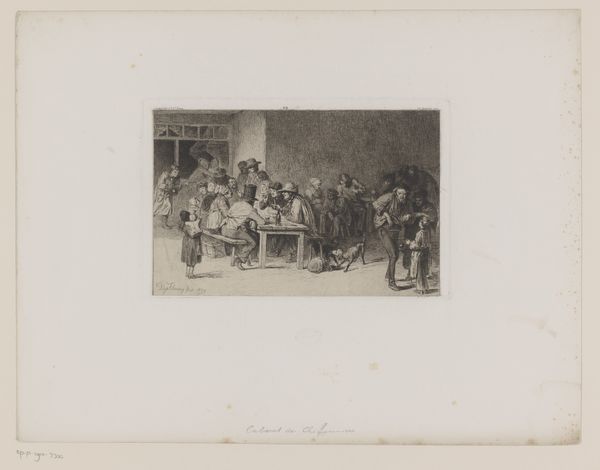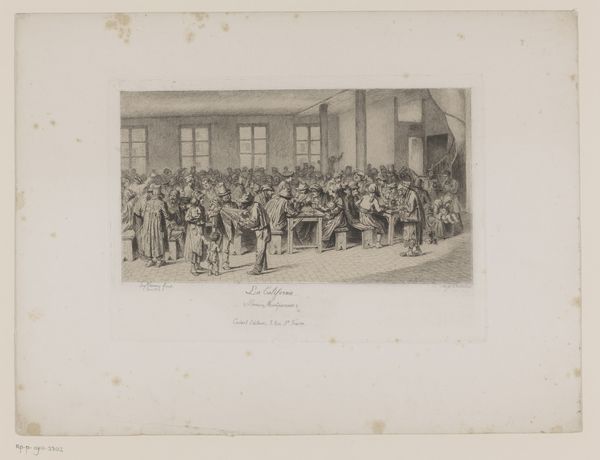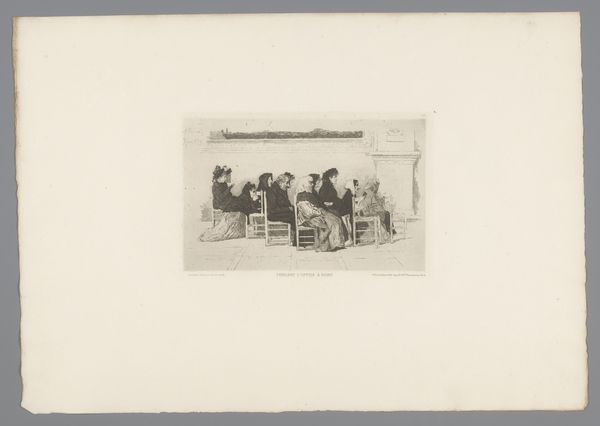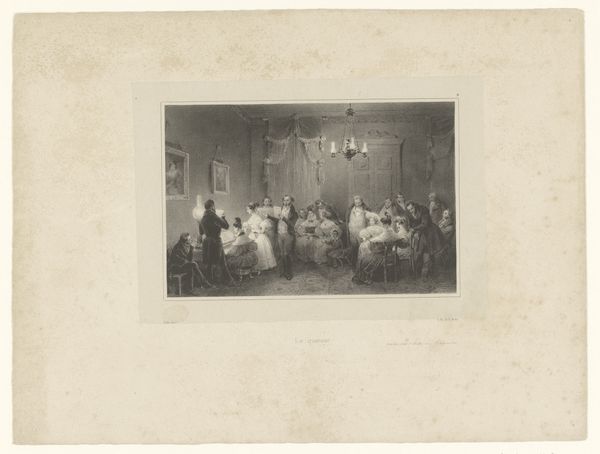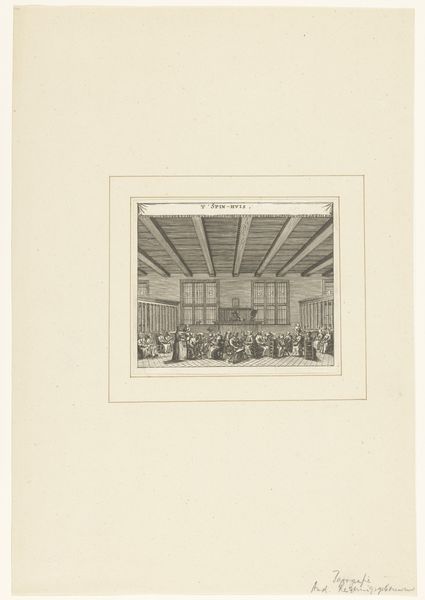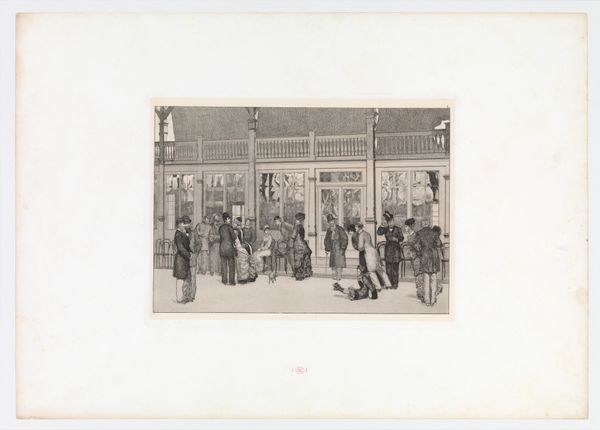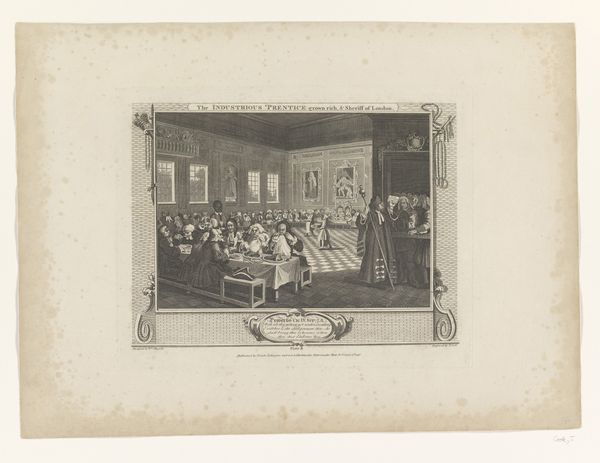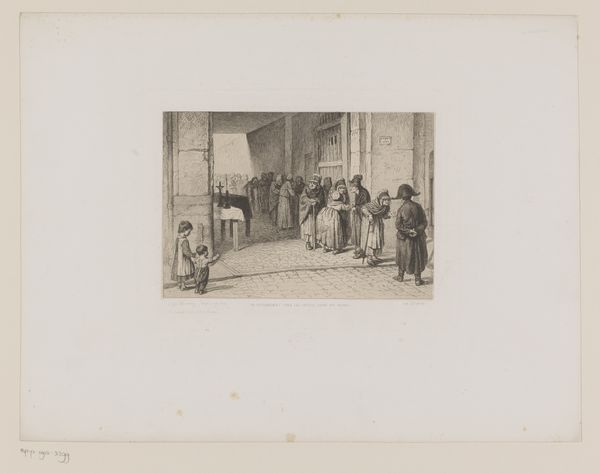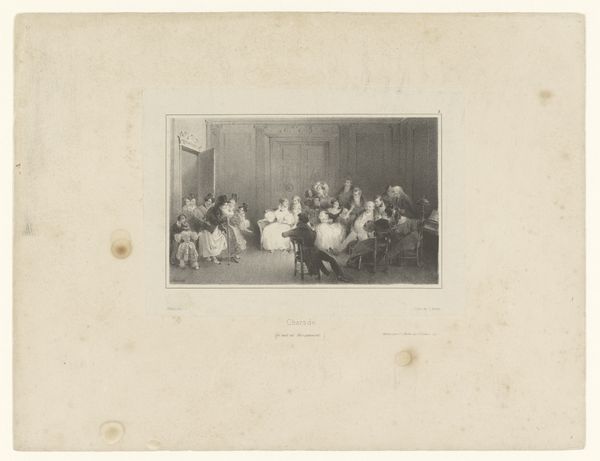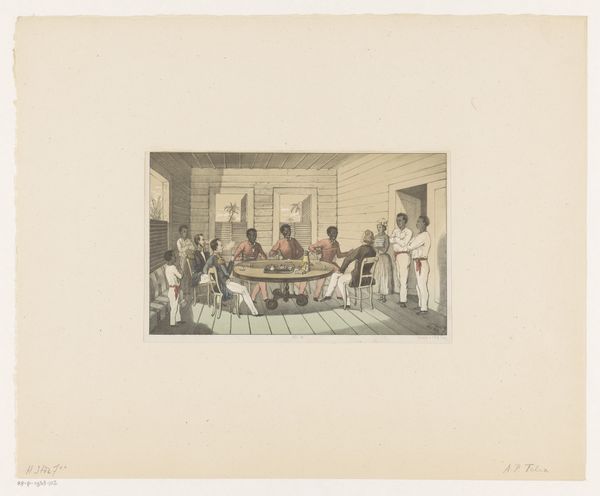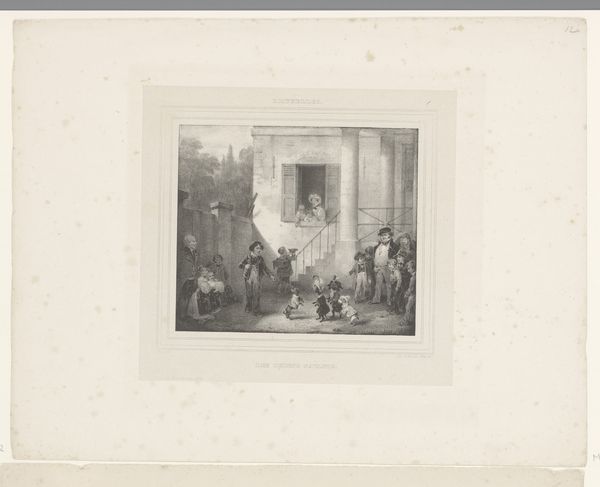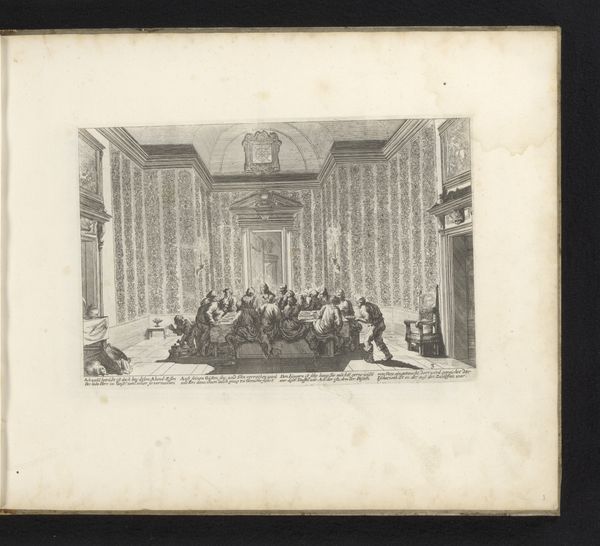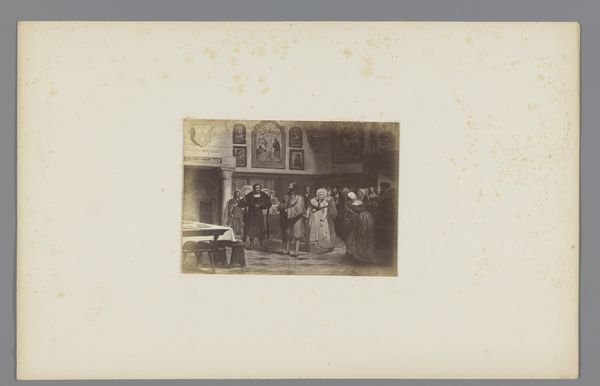
print, engraving
# print
#
genre-painting
#
engraving
#
realism
Dimensions: height 171 mm, width 252 mm
Copyright: Rijks Museum: Open Domain
Editor: Right, let's dive in. This is "Interior of a Butcher Shop" by Léopold Flameng, made around 1860. It's a print, an engraving actually, and I am struck by the calm and order of the people, standing around as if shopping or just loitering at this marketplace, while this butchery should be a bustling or chaotic place, maybe. What catches your eye? Curator: It's interesting, isn't it? It feels a bit like a stage set, doesn't it? A stage with characters deliberately placed. And yes, for me, it triggers some kind of dissonance: butchers work with meat and, likely, also blood – images typically related with some sense of "grotesque," but that seem to be hidden under the seemingly-bourgeois "decorum." Now, considering this artwork was produced during the rise of realism... Editor: So you are telling me that this etching embodies two seemingly antagonist themes or values – realism and idealism? Curator: Perhaps! Realism didn’t always mean gritty reality; sometimes it meant sanitizing life, tidying up the mess for polite society, as it also happened in Dutch paintings of previous centuries. Also, notice that there is no display of product, nor of a working person cutting and weighing anything! Everything is suggested by the looks, the gestures, the interaction between people... How cool is that? The *idea* of labor replaces the *act* of labor, if that makes any sense... Editor: That’s a perspective I wouldn’t have considered. Now I'm also wondering if this also alludes to class structures within society at that time… Curator: Precisely! It’s like Flameng offers us a keyhole into 19th-century social dynamics. Food, commerce, people's behaviors… it’s all intertwined. Editor: This changed completely my understanding of this artwork. Thanks a lot!
Comments
No comments
Be the first to comment and join the conversation on the ultimate creative platform.
